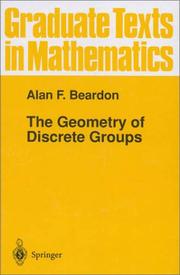| Listing 1 - 2 of 2 |
Sort by
|
Book
ISBN: 9789814968201 9781003256298 Year: 2022 Publisher: Singapore : Jenny Stanford Publishing,
Abstract | Keywords | Export | Availability | Bookmark
 Loading...
Loading...Choose an application
- Reference Manager
- EndNote
- RefWorks (Direct export to RefWorks)
Like no other personality of the 18th and 19th century, Napoleon Bonaparte (1769-1821) and his incessant imperialist wars left lasting marks on the political and cultural profile of Central Europe. After the total defeat of Prussia against Napoleon's Grande Armée in 1806, fundamental reforms of the entire state system were carried out in Prussia, which were soon (partially) adopted by other German states. This also affected the educational system, and led to fundamental reforms for freedom of teaching and research in German universities. As a result, abstract mathematics and astronomy reached a "golden age" in German academic research, of which Carl Friedrich Gauss at Göttingen was an epochal example. August Ferdinand Möbius (1790-1868) was his doctoral student, whose life and work on mathematics and astronomy were profoundly influenced by him. This book reports on August Ferdinand Möbius in the mirror of his time, with its political and social peculiarities. As a matter of fact, Möbius' legacy reaches into today's sciences, arts, and architecture-and is rediscovered again and again-leading to new heights of scientific knowledge and cultural aesthetics. The famous one-sided Möbius strip is a paradigmatic example of the fascination and significance of mathematical topology for understanding unexpected consequences of complex object (de)formation. This is the first book to present numerous case studies on Möbius topology in mathematics, astronomy, chemistry, physics and nanomaterials, literature, arts, and architecture, covering the 18th-19th century up to the present years. It is written for experts and laymen alike, who are interested in the historical development of ideas in science and culture.
Conformal geometry. --- Topology. --- Möbius transformations. --- Géométrie conforme. --- Topologie. --- Möbius, Transformations de. --- Möbius, August Ferdinand,

ISBN: 0387907882 1461270227 1461211468 9780387907888 Year: 1983 Volume: 91 Publisher: New York (N.Y.): Springer
Abstract | Keywords | Export | Availability | Bookmark
 Loading...
Loading...Choose an application
- Reference Manager
- EndNote
- RefWorks (Direct export to RefWorks)
Discrete groups --- Isometrics (Mathematics) --- Möbius transformations --- Geometry, Hyperbolic --- Groupes discrets --- Isométrie (Mathématiques) --- Möbius, Transformations de --- Géométrie hyperbolique --- 514.16 --- Mobius transformations --- #WWIS:d.d. Prof. L. Bouckaert/ALTO --- Hyperbolic geometry --- Lobachevski geometry --- Lobatschevski geometry --- Geometry, Non-Euclidean --- Transformations (Mathematics) --- Groups, Discrete --- Infinite groups --- Geometries over algebras --- 514.16 Geometries over algebras --- Möbius transformations --- Isométrie (Mathématiques) --- Möbius, Transformations de --- Géométrie hyperbolique --- Discrete groups. --- Discrete mathematics
| Listing 1 - 2 of 2 |
Sort by
|

 Search
Search Feedback
Feedback About UniCat
About UniCat  Help
Help News
News